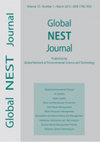印度喜马拉雅山脉西北部生计发展和减缓气候变化的技术干预措施
IF 1.2
4区 环境科学与生态学
Q4 ENVIRONMENTAL SCIENCES
引用次数: 0
摘要
农村生计发展技术转让对保护小气候条件有较大影响,从而在更大程度上影响印度喜马拉雅地区的微生物区系和微生物活动。喜马拉雅研究小组组织进行了技术干预,帮助提高农村穷人的经济水平、赋予妇女权力和保护山区的环境。主要活动是被动式太阳能改造(即热虹吸空气热板(TAP), Trombe Wall (TW)和Sun Spaces (SS))饲料开发,蠕虫堆肥生物技术,蘑菇种植和保护栽培,以减缓和适应气候变化。在冬季的六个月里,每户家庭的太阳能改造减少了大约4.97吨的碳排放,这有助于减少燃料木材的消耗。为提高青饲料的全年利用率,减少水土流失,减少采伐,引进了不同饲料品种的改良品种。为控制饲料浪费,推广了饲料切碎机和青贮制剂。在农民中推广蚯蚓堆肥生物技术,以减少化肥的使用,提高土壤质量。利用冬虫夏草栽培,减少了秸秆焚烧,减少了秸秆的碳排放,将秸秆转化为堆肥。推广在本地建造的杂烩屋进行保护栽培,通过切花、蔬菜种植和培育苗圃,在小块土地上获得最大的回报。本文章由计算机程序翻译,如有差异,请以英文原文为准。
TECHNOLOGICAL INTERVENTIONS FOR LIVELIHOOD DEVELOPMENT AND CLIMATE CHANGE MITIGATION IN INDIAN NORTH-WESTERN HIMALAYAS
The technology transfer for rural livelihood development had greater impact to protect microclimatic conditions which further affects the microflora and microbial activities to larger extent in the Indian Himalayan Region (IHR). The technological interventions were made by the Himalayan Research Group organization which helped in economic upliftment of rural poor, women empowerment and in environment protection in hill region. The major activities are Passive Solar Retrofitting (namely, Thermosyphoning Air heat Panel (TAP), Trombe Wall (TW), and Sun Spaces (SS)) fodder development, vermicompost biotechnology, button mushroom cultivation and protected cultivation for climate change mitigation and adaptations. The solar retrofits reduced estimated 4.97 tones carbon emission per household during six winter months which helped in reducing the fuel wood consumption. Improved varieties of different fodder spp. were introduced for year round green fodder availability and reduce soil erosion and reduction in tree lopping. Fodder choppers and silage preparation was popularized to contain the fodder wastage. Vermicompost biotechnology was popularized among farmers to reduce the use of chemical fertilizers for improving the quality of soil. The button mushroom cultivation was used for conversion of agriculture residue into compost making by reducing crop residue burning which increases carbon emission. Protected cultivation in local made polyhouse was popularized to generate maximum returns from small piece of land through cut flower and vegetable cultivation and by raising plant nurseries.
求助全文
通过发布文献求助,成功后即可免费获取论文全文。
去求助
来源期刊

Global Nest Journal
环境科学-环境科学
CiteScore
1.50
自引率
9.10%
发文量
100
审稿时长
>12 weeks
期刊介绍:
Global Network of Environmental Science and Technology Journal (Global NEST Journal) is a scientific source of information for professionals in a wide range of environmental disciplines. The Journal is published both in print and online.
Global NEST Journal constitutes an international effort of scientists, technologists, engineers and other interested groups involved in all scientific and technological aspects of the environment, as well, as in application techniques aiming at the development of sustainable solutions. Its main target is to support and assist the dissemination of information regarding the most contemporary methods for improving quality of life through the development and application of technologies and policies friendly to the environment
 求助内容:
求助内容: 应助结果提醒方式:
应助结果提醒方式:


